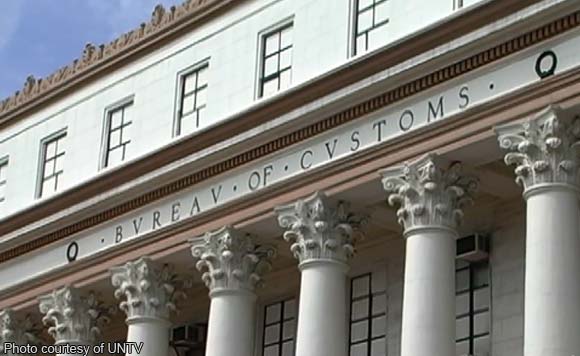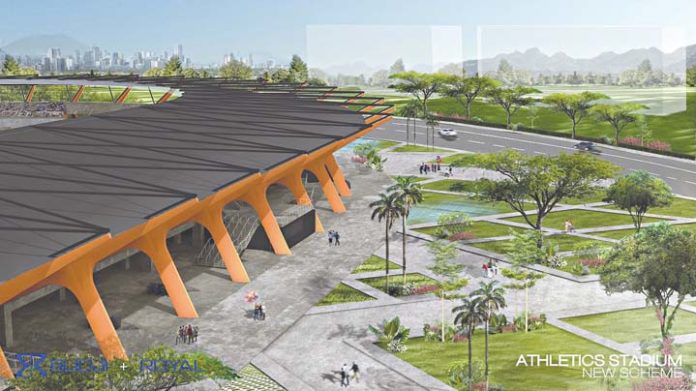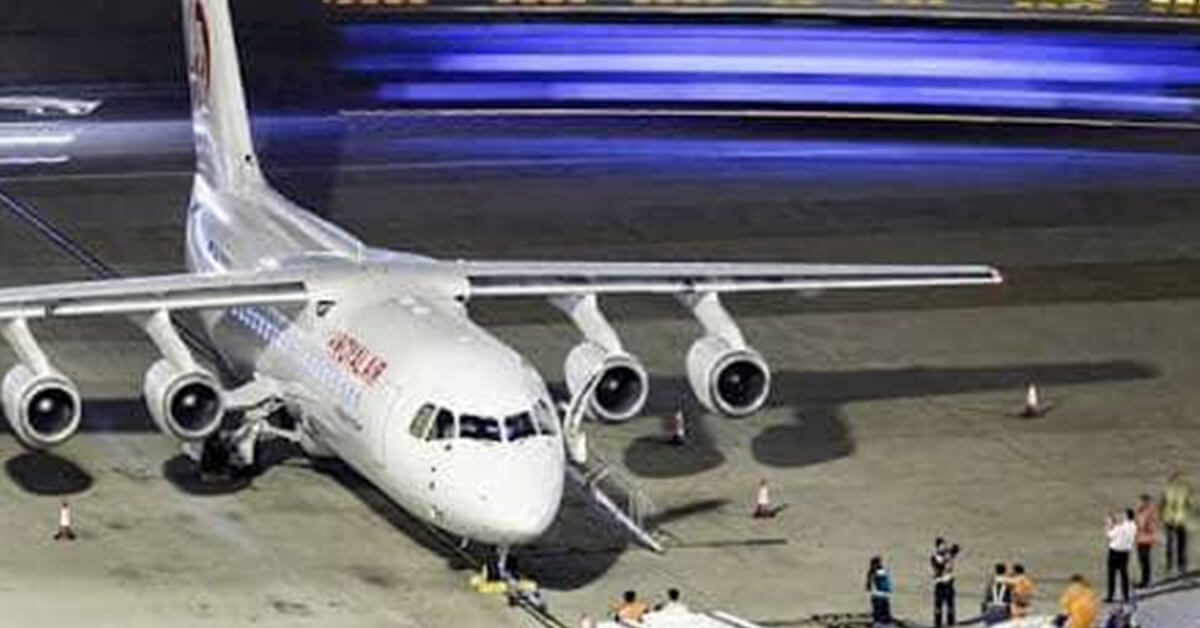Options: Rehab Naia, develop Subic and Clark
Posted 6 years ago
By Elijah Felice E. Rosales & Butch Fernandez
BUSINESS executives on Monday called on authorities to give the immediate go-ahead to the private sector-led rehabilitation of the Ninoy Aquino International Airport (Naia), amid the continuing blame game for the 36-hour paralysis of the premier airport as a disabled foreign plane blocked the runway on Friday.
The Management Association of the Philippines (MAP) told the government to decide and act fast in maintaining the efficiency and competitiveness of the country’s premier gateway. It said the best card on hand is to approve the private-sector initiative to modernize the Naia, even while developing key airports outside the capital region, such as Clark airport in Pampanga.
A separate pitch for also putting back in harness the Subic Bay International Airport (SBIA), which in 1995 was successfully used to receive 747s diverted from the Naia by a similar plane mishap, was made by Sen. Richard Gordon, who was then the head of the agency in charge of developing the sprawling former US naval base in Subic.
At the same time, MAP argued there is no need to close Naia in favor of Clark. Citing cases in other countries, MAP said it will be useful to keep two major airports operating at the same time: one in the capital, the other in a nearby province.
“A city airport, such as the Naia, has the great advantage of convenient access, besides providing support to the local economy. Its benefits should not be neglected. Many metropolitan cities in the world recognize this reality,” the group explained.
“We urge the government to fast-track the approval of the private-sector upgrade of the Naia, particularly airside and landside improvements, based on value-for- money principles. While physical improvements are slated, airport management, including maintenance and upkeep, must be raised to world standards,” MAP said in a statement.
36-hour fiasco

|
Photo credit: filipinotimes.net
The group’s comment came in the wake of a travel fiasco that hit the Manila transport facility. Over the weekend thousands of passengers got stranded at the Naia after it took authorities 36 hours to remove a disabled B737 of Xiamen Airlines from an international runway.
Before anyone could raise it, however, MAP advised against shutting down the Naia, amid calls to develop alternatives such as Clark International Airport. It argued its immediate development “appears to be the most cost-effective and fastest solution to the severe congestion currently plaguing the Manila airport.”
On top of this, the group recommended linking the Naia with Clark as a way to divert to the latter some of the air traffic from the former. A railway line between the two had long been proposed.
“The MAP urges the adoption of an airport complementation strategy whereby the existing Naia and Clark international airports are developed and operated as an integrated system with the two airports complementing each other, ideally with an express rail link in place. Under this dual airport system, the Naia should be upgraded expeditiously, preferably undertaken by the private sector, including a possible close-in parallel runway for emergencies, such as the recent closure of the main runway,” MAP said.
“The upgrade should realize the optimal safe capacity of the Naia. The Clark International Airport should be expanded to relieve the current demand pressure on the Naia and, more important, meet future demand growth,” it added.
Other countries
“We strongly object to the closing of the Naia, which we consider as a very drastic and counterproductive move. The Naia is a strategically located air gateway supported by a road system already in place and with proximately located rail and future subway lines to serve the needs of air travelers in Mega Manila and southern Luzon,” the group declared.
In citing other countries where two or more premier airports are maintained, MAP pointed out: “Their old city airports, instead of being phased out as previously intended in favor of newer large-capacity airports in the suburbs, are being upgraded. For example, Tokyo Haneda is being expanded to supplement Narita; Shanghai has its [Hongqiao] in addition to Pudong; London City airport at the Canary Wharf; Reagan airport in Washington; La Guardia in New York City; [and] even Bangkok is keeping Don Muang with Suvarnabhumi,” it added.
“The Naia and Clark require only upgrades while a new airport complex, from the ground up, will require an exhaustive study and a well-considered approach as seen in projects of such nature abroad. In particular, aside from its financial viability, a credible environmental impact assessment must be made,” MAP said.
‘Decongest Naia, develop Clark’
Also on Monday, Sen. Aquilino “Koko” L. Pimentel III renewed his two-year call to “go full blast” with the development of other air transport hubs, notably the Clark International Airport, where some of the flights were diverted in the wake of Friday’s Naia runway blockage.
“We can’t dillydally anymore. I made the same call in 2016. Let’s not wait for another airplane incident, which hassled thousands of passengers, to realize there should be an urgent and comprehensive government plan to decongest the Naia,” Pimentel said in a statement.
A Xiamen Airlines passenger plane slid off a Naia runway during a heavy downpour late Thursday night, August 16. All 157 passengers and eight flight crew were safely removed from the aircraft. The incident, however, led to flight delays and cancellations for two consecutive days because airport authorities needed to remove the stalled aircraft from the runway.
“We require two airports as our main international gateways. The Naia can serve South Metro Manila and Southern Luzon to Bicol, and Clark can address the needs of passengers from North Metro Manila and northern Philippines. Both hubs may share handling of travel and logistics flow to the Visayas and Mindanao,” Pimentel noted.
The underutilized airport in the former US military base at Clark has an area of 2,367 hectares, compared to theNaia’s 700 hectares. With its single runway, flight delays averaging to 45 minutes are a daily occurrence at the Naia aside from traffic jams to and from the airport.
Pimentel said that Clark could eventually service “flight transfers of international passengers, such as our OFWs, who need to go home to their families in the Visayas
and Mindanao.”
“If you’re going to the province anyway via a connecting flight and you don’t need to stay in Manila, Clark International could be a better transfer point. Proposals such as these can work and should be tried,” Pimenel said.
“An integrated transport system is needed to fully realize Clark’s potential. We require a convenient, high-speed rail network from Pampanga to Manila, as well as more flyovers and wider Nlex lanes. At present, P2P buses are not enough to give the speed and comfort of a world-class hub,” said Pimentel.
Pimentel pointed out that a low-cost international carrier has already chosen Clark as its center of operations. Domestic flag carrier Philippine Airlines has, likewise, committed to boost its operations in Clark, as well as in Cebu and Davao.
Why not Subic?
This developed as Sen. Richard J. Gordon, Blue Ribbon panel chairman, said the Naia incident drove home the need to fast-track the reopening of the Subic Bay airport.
“If the SBIA was already operational, flights could have been diverted to both SBIA and Clark International Airport which would have mitigated the effects of the closure of Naia’s main runway last August 17,” Gordon said on Monday.
A former secretary of tourism, Gordon stressed that airports are “the country’s doorway to tourism, trade and investment.”
“Thus, when flights are delayed or canceled, it incurs cost, not only to passengers who are stressed and inconvenienced because they miss their work, classes or other appointments, but also to the airlines and companies doing trade and commerce,” he added.
Gordon recounted a similar incident in December 1995, when he was chairman of the Subic Bay Metropolitan Authority (SBMA), and a China Airlines jumbo jet bound for Taiwan was ditched in the Naia runway and international flights had to be diverted to the then newly opened SBIA. “During the time, I was having lunch with the then Hong Kong Gov. Chris Patten, who was visiting Subic. SBMA was hosting a luncheon at the old Officers Club. As we could see the Subic Airport from across the bay, he asked me if Boeing 747s could land there, I said of course, as the former airport used to land C-5 military aircraft. Then suddenly, I was surprised to see an actual Boeing 747 land at the airport and a few minutes later, followed with more 747s. I suddenly thought it was my lucky day. I was later informed that the Naia was closed and was diverting flights to Subic.”
Gordon recalled that despite “the short notice, I immediately put together hundreds of volunteers and staff to the airport. They helped unload 1,490 passengers, including their baggage, from four 747 jumbo jets [Singapore Airlines from Taiwan and Singapore; Qatar Airlines from Bangkok] pending transfer and departure. We worked late into the night to take care of and secure the stranded passengers.”
It is time, he said, to complete the rehabilitation of the SBIA to enable it to return to full operation by the second quarter of 2019, calling on the Department of Budget and Management to facilitate the bidding for airport equipment “as soon as possible.”
The Naia runway mess last Friday forced domestic airlines to cancel and divert dozens of flights, forcing tens of thousands of passengers to wait in uncertainty. Flag carrier Philippine Airlines had to cancel 68 trips and divert 21 flights, while budget carrier Cebu Pacific reported 151 flights were affected, according to a previous report.
Poe panel probe
The airport paralysis will now be investigated by lawmakers.
Sen. Grace Poe pressed on Monday for a “full-blown” probe into the system breakdown that paralyzed operations at the Naia.
Senate Resolution 852 filed by Poe Monday directs the Senate Committee on Public Services, which she chairs, to “conduct a full-blown investigation, in aid of legislation, anent the airport, aeronautical and non-aeronautical, and aviation authority’s apparent and seeming broken systems of regulations as can be gleaned from the recent runway cataclysm-mishap involving Xiamen Airline, which led to airport paralysis and affected thousands of passengers and substantial flight cancellations anathema to rendering basic efficient public services.”
Poe’s resolution mandates a review of “airport operations and management, assessing tourism, economic and investment impacts, and protecting the interests of passengers and the country as a whole.”
Senate President Vicente C. Sotto III, when asked to clarify, said Poe may need to wait until August 28 resumption of sessions for the required plenary referral of her Resolution 852 before the Public Services panel which she chairs can start hearings.
“Yes. Only the Blue Ribbon Committee can conduct a hearing without a resolution or referral. Motu propio,” Sotto told the BusinessMirror, citing Senate Rules.-With a report by Joey Pavia
source: businessmirror.com.ph

































Loading Comment